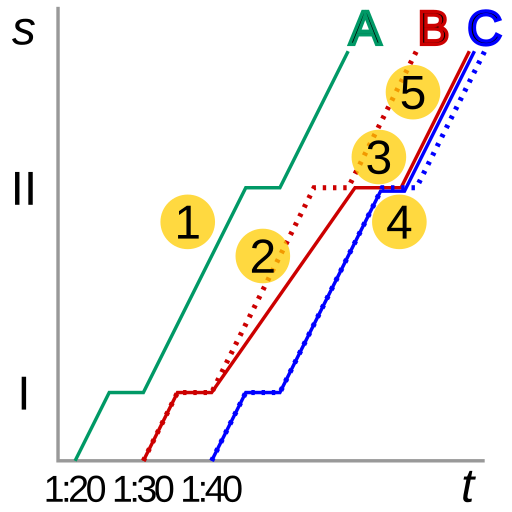
When two or more buses are scheduled at regular intervals on the same route, planners may expect that each will make the same progress, pausing at each stop for the same interval (1). But if Bus B is delayed by traffic congestion (2), it incurs a penalty: Because it arrives late to the next stop, it will pick up some passengers who’d planned to take Bus C (3). Accommodating these passengers delays Bus B even longer, putting it even further behind schedule. Meanwhile, Bus C begins to make unusually good progress (4), as it now arrives at each stop to find a smaller crowd than expected.
As the workload piles up on the foremost bus and the one behind it catches up, eventually the result (5) is that the two buses run in a platoon, arriving together at each stop. Sometimes Bus C even overtakes Bus B.
What to do? Planners can set minimum and maximum amounts of time to be spent at each stop, and buses might even be told to skip certain stops during crowded runs. Passengers might be encouraged to wait for a following bus, with the inducement that it’s less crowded. Northern Arizona University improved its service by abandoning the idea of a schedule altogether and delaying buses at certain stops in order to maintain even spacing. One thing that doesn’t work: adding vehicles to the route — which might, at first blush, have seemed the obvious solution.
